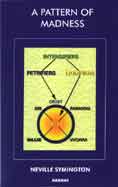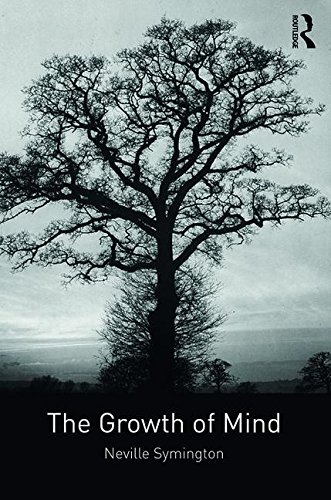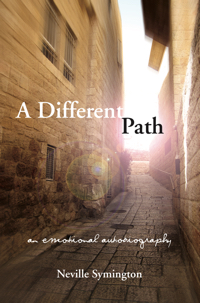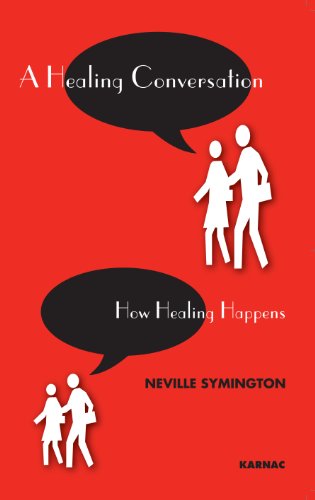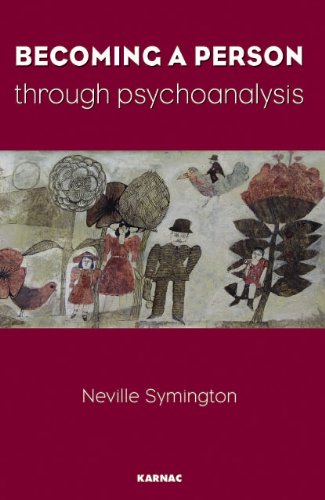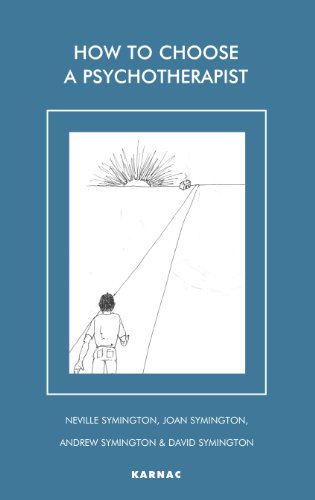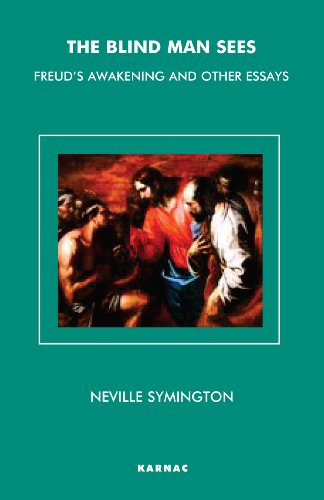Becoming a Person through Psychoanalysis
Someone becomes a person when all the inner events in the personality have been created. There is a creative principle within each individual but its shape or form is uniquely different in each. One face is like another in that there are two eyes, a nose, two ears, a mouth, two cheeks, a forehead and a chin and yet no two faces are the same; so it is with the creative principle. Our human task is to become who we are and this occurs through an act of this creative principle whereby there is a change from being hurt to knowing that I am hurt, from being lonely to knowing that I am lonely, to being joyful to knowing that I am happy, from being gifted to knowing that I am gifted. When I am sad, truly sad, it is because I have created that sadness. So also with joy - I have created that joy. This need to create the emotional elements within us was understood by an anonymous English writer of the fourteenth century who said:
" All men have matter of sorrow; but most specially he feeleth matter of sorrow that knoweth and feeleth that he is. All other sorrows in comparison with this be but as it were game to earnest. For he may make sorrow earnestly that knoweth and feeleth not only what he is, but that he is. And whoso felt never this sorrow, let him make sorrow; for he hath never yet felt perfect sorrow." 1
It could not be put more beautifully than this: and whoso felt never this sorrow, let him make sorrow. This is I believe our life's task. It also means the most fantastic thing: that we need to create our own existence. The writer says 'he feeleth matter of sorrow that knoweth and feeleth that he is'. As this passage indicates it is not only creating sorrow but also creating our existence. It sounds fantastic to say that someone does not know that he exists yet this writer clearly is making a distinction between someone who does know and someone who does not know. It is the difference between knowing because I have been told and knowing it from within. This change can happen through psychoanalysis where someone feels he is a living being rather than being a corpse, although a walking corpse.
In order for this amazing transformation to take place I believe that the psychoanalyst has to be present to the other in a particular way. This way is different technically from the way in which psychoanalysis has been traditionally presented and practised. This book charts my own journey towards - towards an understanding that is theoretical but a theory that has technical consequences. This demands that we abandon certain cherished practices and surge forth into the unknown, into that frightening furnace in which a new person is born. This new person is unfamiliar and frightening. It is strange that one can be frightened of who one is
Certain schools of psychoanalysis have focussed upon projective identification. When I hate something inside of myself and dissociate myself from it and thrust it out of myself I have to do it into a receptacle. This waste-paper basket into which I thrust my hated elements in myself may be my own body, my own sexual activity or into an individual, an ideology, a religion, a political system or the nation or tribe to which I belong. It is this activity which is named so lamely as projective identification, a term designed to rob a practice of all its passion and intensity. Analysis that focuses upon this process is concerned with what the patient is doing to the analyst - always something unpleasant. However there is another process which I have called creative communication. 2 This is a process where the creative principle within one individual occurs through the creative activity of another person with whom she is engaged. When the analyst's creative principle is active it creates something outside of herself - in the potential personhood of the other. The other's creation is entirely free but the source maybe from outside. This is a difficult notion to grasp. The analyst is not getting rid of something hated within but creating the uncreated elements into a creation, into a person. This new being, this personal creation occurs both in the analyst and in the patient. I am at present writing a book in which I hope that this process will be philosophically and psychologically elucidated.
This book: Becoming a Person through Psychoanalysis charts my journey towards this conclusion. It has taken me a long time to come to the above conclusions. The book starts with examining the philosophy of my own analyst, John Klauber. He had a particular view as to what it is that enables development of the person. The analyst has to give of himself, share his own experience, his own thinking and that this process gives birth to the person. Before any interpretation is given this more basic process is necessary if someone is to become a person. It is this basic process that I develop most especially in this book. At many points this perspective was lost when I was immersed in theoretical viewpoints which where antithetical to this view. Slowly however I came back to what I have always believed: that the only human encounters which are truly effective are those which are in essence personal. I believed this before I came to psychoanalysis and I believe it is a view that is more basic to human experience than all systems of thought or conceptual structures.
I believe that the development of this perspective can, if pursued with detached intent and undaunted enquiry, be a solution to what many people are looking for in to-day's disordered world.
1 The Cloud of Unknowing and Other Treatises (1952) by An English Mystic of the Fourteenth Century. p.61. London: Burns Oates.
2 SYMINGTON, N. (2002). A Pattern of Madness. p. 215. London: Karnac Books.
??
??
??
??
" All men have matter of sorrow; but most specially he feeleth matter of sorrow that knoweth and feeleth that he is. All other sorrows in comparison with this be but as it were game to earnest. For he may make sorrow earnestly that knoweth and feeleth not only what he is, but that he is. And whoso felt never this sorrow, let him make sorrow; for he hath never yet felt perfect sorrow." 1
It could not be put more beautifully than this: and whoso felt never this sorrow, let him make sorrow. This is I believe our life's task. It also means the most fantastic thing: that we need to create our own existence. The writer says 'he feeleth matter of sorrow that knoweth and feeleth that he is'. As this passage indicates it is not only creating sorrow but also creating our existence. It sounds fantastic to say that someone does not know that he exists yet this writer clearly is making a distinction between someone who does know and someone who does not know. It is the difference between knowing because I have been told and knowing it from within. This change can happen through psychoanalysis where someone feels he is a living being rather than being a corpse, although a walking corpse.
In order for this amazing transformation to take place I believe that the psychoanalyst has to be present to the other in a particular way. This way is different technically from the way in which psychoanalysis has been traditionally presented and practised. This book charts my own journey towards - towards an understanding that is theoretical but a theory that has technical consequences. This demands that we abandon certain cherished practices and surge forth into the unknown, into that frightening furnace in which a new person is born. This new person is unfamiliar and frightening. It is strange that one can be frightened of who one is
Certain schools of psychoanalysis have focussed upon projective identification. When I hate something inside of myself and dissociate myself from it and thrust it out of myself I have to do it into a receptacle. This waste-paper basket into which I thrust my hated elements in myself may be my own body, my own sexual activity or into an individual, an ideology, a religion, a political system or the nation or tribe to which I belong. It is this activity which is named so lamely as projective identification, a term designed to rob a practice of all its passion and intensity. Analysis that focuses upon this process is concerned with what the patient is doing to the analyst - always something unpleasant. However there is another process which I have called creative communication. 2 This is a process where the creative principle within one individual occurs through the creative activity of another person with whom she is engaged. When the analyst's creative principle is active it creates something outside of herself - in the potential personhood of the other. The other's creation is entirely free but the source maybe from outside. This is a difficult notion to grasp. The analyst is not getting rid of something hated within but creating the uncreated elements into a creation, into a person. This new being, this personal creation occurs both in the analyst and in the patient. I am at present writing a book in which I hope that this process will be philosophically and psychologically elucidated.
This book: Becoming a Person through Psychoanalysis charts my journey towards this conclusion. It has taken me a long time to come to the above conclusions. The book starts with examining the philosophy of my own analyst, John Klauber. He had a particular view as to what it is that enables development of the person. The analyst has to give of himself, share his own experience, his own thinking and that this process gives birth to the person. Before any interpretation is given this more basic process is necessary if someone is to become a person. It is this basic process that I develop most especially in this book. At many points this perspective was lost when I was immersed in theoretical viewpoints which where antithetical to this view. Slowly however I came back to what I have always believed: that the only human encounters which are truly effective are those which are in essence personal. I believed this before I came to psychoanalysis and I believe it is a view that is more basic to human experience than all systems of thought or conceptual structures.
I believe that the development of this perspective can, if pursued with detached intent and undaunted enquiry, be a solution to what many people are looking for in to-day's disordered world.
1 The Cloud of Unknowing and Other Treatises (1952) by An English Mystic of the Fourteenth Century. p.61. London: Burns Oates.
2 SYMINGTON, N. (2002). A Pattern of Madness. p. 215. London: Karnac Books.
??
??
??
??
By Neville Symington
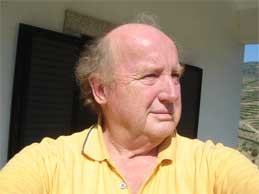
View more details for Neville Symington
Narcissism: A New Theory
- Paperback
The Making of a Psychotherapist
- Paperback
A Pattern of Madness
- Paperback
The Growth of Mind
- Paperback
The Clinical Thinking of Wilfred Bion
- Paperback
Becoming a Person Through Psychoanalysis
- Paperback
How to Choose a Psychotherapist
- Paperback





